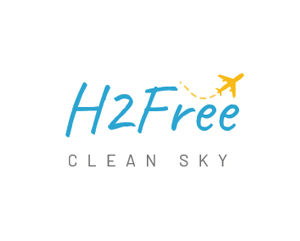
The H2Free project will develop a degassing model, which aims to be a key tool to substitute the toxic metal cadmium by zinc-nickel
Ultra-high strength steels (UHSSs) are used due to their extraordinary resistance mainly for landing gears in the aeronautic industry. To resist corrosion, these materials require a coating that has usually been made using cadmium (Cd), a toxic metal whose use is advisable to avoid. Aiming to make industrial processes more sustainable, the European aviation sector is working on substituting Cd with innovative, environmental friendly coatings. Therefore, the H2Free project has just been launched. The project a aims at being a step further to make replacement of Cd by zinc/nickel (Zn-Ni) coating a reality in all applications.
Zn-Ni coatings are considered to be a viable and non-toxic substitute. The aim of the H2Free project, as part of the European CleanSky2 macroprogramme, is to develop a practical guide for the degasification of hydrogen from UHSS steel coated with Low Hydrogen Embrittlement (LHE) Zn-Ni and Cd, in order to save production costs and minimise environmental impact. The challenging part is the lack of knowledge about the degassing kinetics as it is till now unknown in advance if a standard degasification process is always necessary or effective in lowering the hydrogen content below the critical level, leading in some cases to scrap preventively entire components.
The H2Free project, coordinated by CIDETEC Surface Engineering, has led to the formation of a consortium made up of four outstanding research centres and two SMEs with complementary profiles and great experience. CIDETEC Surface Engineering, as well as being a centre experienced in the management of European projects, having taken part in over 25 of them, is a benchmark in research into electrochemistry and plating for many industries. HELMHOLTZ-ZENTRUM GEESTHACHT has a lot of experience in developing predictive modelling and simulation of service-life aspects. ELSYCA will provide its experience in modelling processes of functional electroplating applications, while AZTERLAN will study hydrogen embrittlement of UHSS. In addition, the consortium is complemented with the technical knowledge to carry out surface treatments for the aerospace industry from ELHCO and MAX-PLANCK-INSTITUT FÜR EISENFORSCHUNG, a leading materials research institute focusing on advanced materials research with capabilities to perform hydrogen measurements with very high precision.
H2Free is a project funded by the EU Horizon 2020 Framework Research and Innovation Programme and it is managed by Clean Sky Joint Undertaking (CSJU) through the CleanSky2 grant programme.